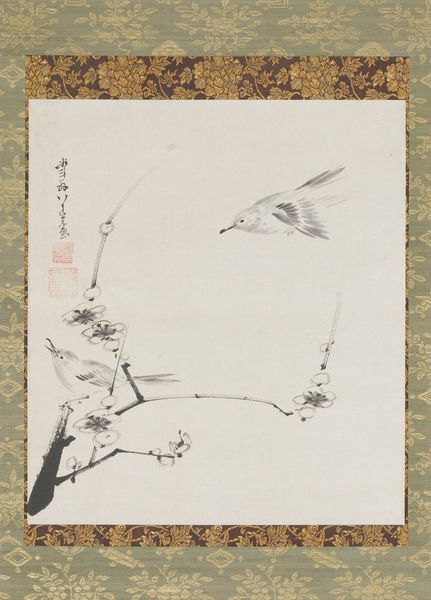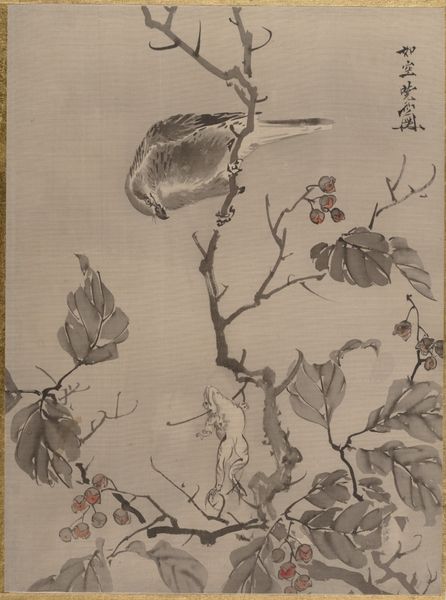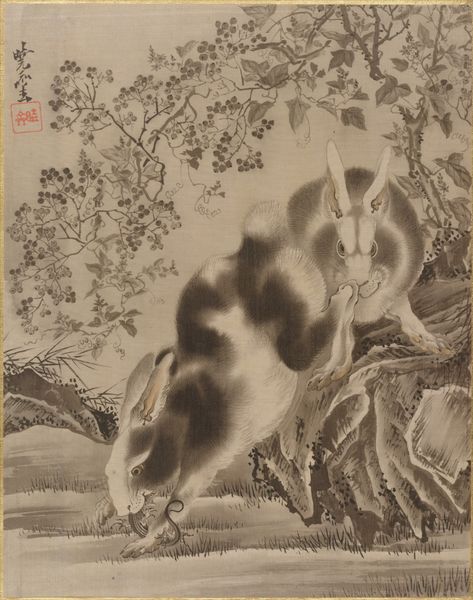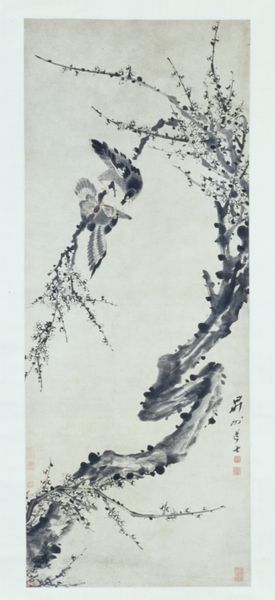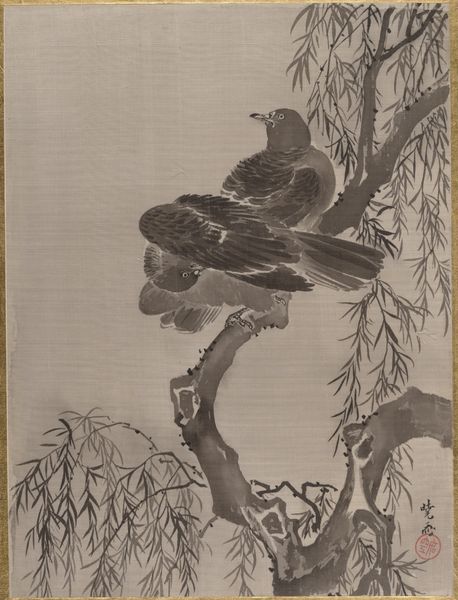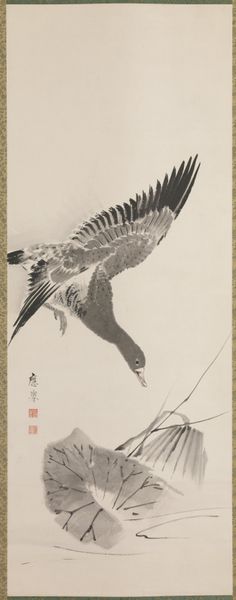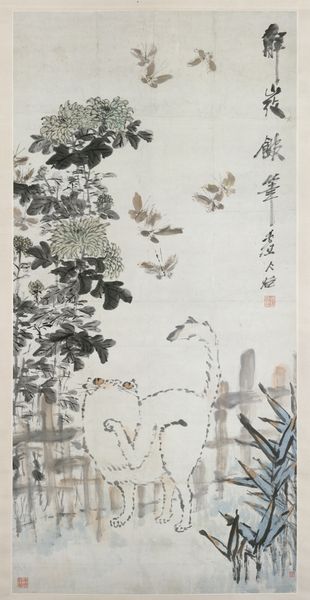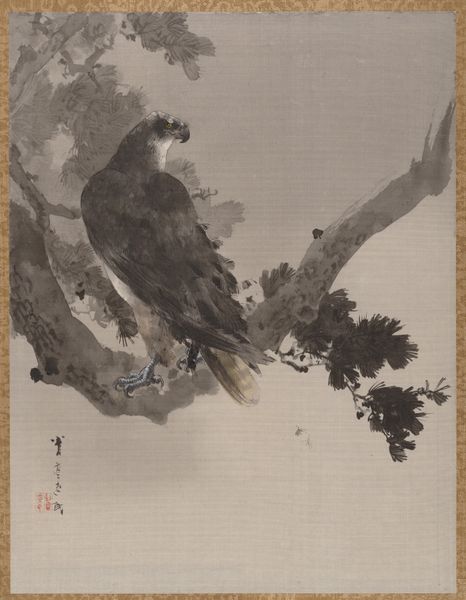
hanging-scroll, ink
#
asian-art
#
caricature
#
ukiyo-e
#
japan
#
figuration
#
hanging-scroll
#
ink
#
pencil drawing
#
calligraphy
Dimensions: 50 1/2 x 19 7/8 in. (128.27 x 50.48 cm)
Copyright: Public Domain
Curator: This hanging scroll, known as "Cat and Goose," comes to us from Maruyama Okyo, dating back to about 1784. It’s done in ink, a classic example of Japanese figuration on silk, now residing here at the Minneapolis Institute of Art. Editor: It strikes me as so understated. The sparseness of the ink on silk, the asymmetry of the composition. The dark, almost abstract rock form looms above the softly rendered cat, while lilies dance on their thin stems on the upper-left part of the work. Curator: Okyo was instrumental in moving away from purely academic styles in Japanese art, which makes pieces like this so interesting. During that time, artistic expression was still under very strict societal constraints. The turn to something softer had socio-political implications, allowing him space to subtly critique those constraints and engage with personal sentiment. Editor: The way the forms are rendered also reveals a lot. The stark, angular strokes which defines the contours of the rock are contrasted against the subtle gradients in the depiction of the cat and the flowers. I’m fascinated by that dynamic play between rigidity and fluidity; between structure and grace. Curator: Exactly! The rise of the merchant class at that time had opened new avenues of patronage, and this also helped to reshape the social function of art. Hanging scrolls became part of domestic decor and a reflection of that family’s cultural interests, not just religious. Editor: I see how the composition subtly guides your eye through the artwork. From the sturdy base of the rock and the concentrated dark inks which make up its crevices, we trace our way up along the soft tendrils of those flowers which frame the negative space around it, like a silent musical notation that we unconsciously understand. Curator: Thinking of this scroll, in the context of Okyo’s practice allows us to view it not just as an object of beauty but as a moment in Japan’s changing social and political landscape. Editor: It is interesting how the sparse treatment of forms, like in traditional calligraphy, directs focus to certain core features, making us pause, breathe, and perceive not just with sight, but also feel something of their tranquil weight and beauty.
Comments
No comments
Be the first to comment and join the conversation on the ultimate creative platform.
